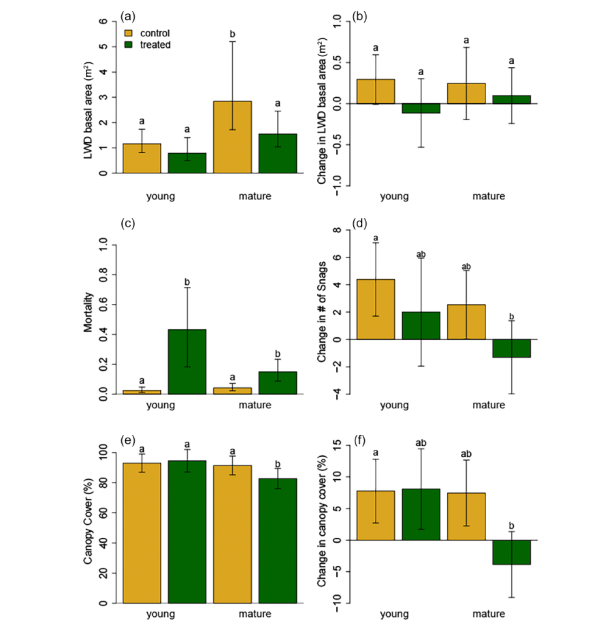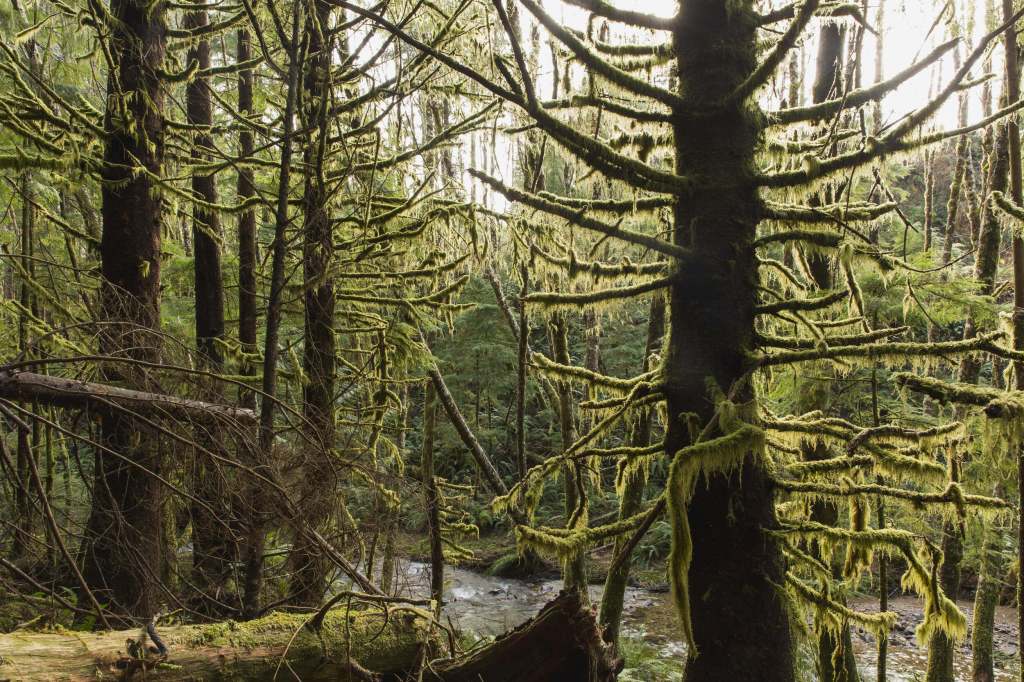As calls to restore the Pacific Northwest’s old-growth forests gain momentum, TNC scientists and partners are evaluating the results of 15 years of forest management practices at TNC’s Ellsworth Creek Preserve in Washington State to inform future, large-scale restoration efforts.
The Gist
The coastal temperate rainforests on the Pacific Northwest Coast of the US are some of the most productive forests in the world. Unfortunately, decades of industrial-scale, production-oriented forest management has transformed many ecologically diverse forests into intensively managed landscapes typically dominated by a single species, such as Douglas-fir.
There is a clear ecological need to restore these old-growth forests and their function.
“Of course, the key challenge,” says lead author TNC forest ecologist, Dr. Michael Case, “is time. They’re called old-growth forests for a reason. It takes a long time to develop all of those characteristics that we feel when walking into an ancient stand. So we wanted to know if our restoration techniques—specifically strategic forest thinning—can help younger forests develop more of the characteristics of old-growth forests on a shorter time-scale, over decades instead of centuries.”
The answer to that question published in Conservation Science and Practice, is yes, restoration treatments are positively correlated with the development of key old-growth forest indicators—larger trees, more complex forest structures, reduced tree density, and increased understory plant richness.
The study also demonstrates, however, that some restoration indicators responded in counter-intuitive ways contingent on interactions between stand age and restoration treatment.
The Big Picture
Researchers note that their findings “support research demonstrating that younger forest stands have a faster and larger growth response to thinning treatments than older, mature stands.”
For example, from 2007 to 2020, tree basal area, a measure of tree density, increased more, and relative growth was greater in treated plots compared to control plots of young stands.
Similarly, tree diameter increased 5.8 cm more in thinned versus control treatments for young stands (p < .05 based on post hoc tests), but differences across treatments were not significant for mature stands. Tree height increased by 1.4 m more in young, treated compared to young, control stands (p < .05 based on post hoc tests); there was no significant difference between mature, control and mature, treated plots.

The Takeaway
TNC scientists and partners have been working at TNC’s Ellsworth Creek Preserve, and adjoining state and federal protected lands, for 20 years. It’s this long-term commitment to place that provides the empirical data for studies of this kind.
Researchers note that few studies have attempted to evaluate the efficacy of restoration in accelerating the development of old-growth characteristics and even fewer explore how those effects can have implications to wildlife habitat and resilience to climate change. At Ellsworth, researchers are working to fill that gap by focusing on a restoration goal of recreating the forest stand structure and ecological function characterized by the once ubiquitous old-growth forests of the region.
“We explore,” notes Case, “how meeting these objectives can also enhance wildlife habitat, particularly for endangered and threatened species, and may increase forest resilience to climate change. For instance, increasing species diversity, particularly of deciduous hardwood species, can increase resilience to climate change, and reducing tree density may reduce the effects of drought, and other stressors, such as insects and diseases, as the climate continues to warm.”
Through this work, researchers learned two important lessons: (1) more time and monitoring may be needed to fully understand the effects of restoration treatments, and (2) a “one and done” approach of implementing restoration treatments may not achieve a full suite of old-growth characteristics.
Moreover, long-term management for wildlife habitat and climate resilience will likely require an adaptive approach, with ongoing monitoring continually informing and adjusting management practices.



